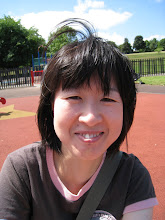The study of Language by George Yule (2006)
New Words
Phonetic alphabet: a set of symbols, each one representing a distinct sound segment
Phonetics: the study of the characteristics of speech sounds
Articulatory phonetics: the study of how speech sounds are produced
Auditory phonetics: the study of the perception by speech sounds by ear, also called ‘perceptual phonetics’
Vocal cords: this stripes of muscle in the larynx which can be open, in voiceless sounds, or close together, creating vibration in voiced sounds
Bilabial: a consonant produced by using both lips (e.g. the first and last sounds in pub)
Labiodental: a consonant produced with the upper teeth and the lower lip (e.g. the first sounds in very funny)
Dental: a consonant produced with the tongue tip behind the upper front teeth (e.g. the first sound in that)
Alveolar: a consonant produced with the front part of the tongue on the alveolar ridge (e.g. the first and last sounds in dot)
Alveolar ridge: the rough bony ridge immediately behind the upper front teeth
Palatal: a consonant produced by raising the tongue to the palate, also called ‘alveo-palatal’ (e.g. the first sounds in ship and yacht)
Palate: the hard part of the roof of the mouth
Velar: a consonant produced by raising the back of the tongue to the velum (e.g. the first and last sound in geek)
Velum: the soft area at the back of the roof of the mouth, also called the ‘soft palate’
Glottal: a sound produced in the space between the vocal cords (e.g. the first sound in hat)
Glottis: the space between the vocal cords
Stop: a consonant produced by stopping the air flow, then letting it go, also called ‘plosive’ (e.g. the first and last sounds in cat)
Fricative: a consonant produced by almost blocking the air blow (e.g. the first and last sounds in five)
Affricate: a consonant produced by stopping then releasing the air flow through a narrow opening (e.g. the first and last sounds in church)
Nasal: a sound produced through the nose (e.g. the first sounds in my name)
Liquids: a sound produced by letting air flow around the slides of the tongue (e.g. the first sound in lip)
Glides: sounds produced with the tongue in motion to or from a vowel sound, also called ‘semi-vowels’ or ‘approximants’ (e.g. the first sounds in wet, yes)
Glottal stop: a sound produced when the air passing through the glottis is stopped completely then released
Flap: a sound produced with the tongue tip briefly touching the alveolar ridge
Study questions
1 Acoustic phonetics is the study of the physical properties of speech as sound waves in the air. Auditory phonetics is the study of the perception, via the ear, of speech sound.
2 a) bang (+V) b) crash (-V) c) smack (-V) d) splat (-V) e) thud (+V) f) wham (+V)
3 a) belly (bilabial) b) calf (velar) c) chin (palatal) d) calf (velar) e) foot (labiodental) f) knee (alveolar) g) mouth (bilabial) h) thigh (dental) i) toe (alveolar)
4 a) cherry (affricate) b) crazy (stop) c) dizzy (stop) d) funny (fricative) e) happy (glide) f) jolly (affricate) g) loony (liquid) h) merry (nasal) i) silly (fricative)
5 a) back b) bought c) face d) how e) hoping f) who g) cloak h) cheap i) the
Subscribe to:
Post Comments (Atom)

No comments:
Post a Comment